The chapel still linking Orkney and Italy - 80 years after WW2 ended
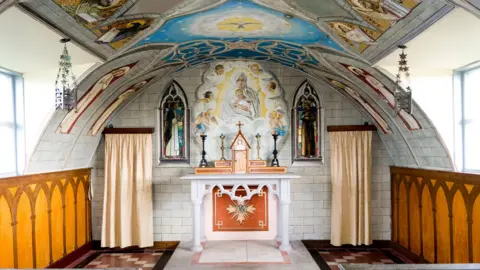 Getty Images
Getty ImagesIt's almost 80 years since the end of World War Two, during which Orkney became home to hundreds of Italian prisoners of war.
But links forged between the island community and the former prisoners' families remain strong – thanks to a tiny, ornate chapel.
Known as the Italian Chapel, it was built by the detainees during their time on the islands and it is now one of Orkney's most popular tourist attractions.
Letizia Chiocchetti, whose father painted the building, is firm friends with 91-year-old Orcadian John Muir who remembers watching it being constructed.
She is proud of the work of her father, Domenico Chiocchetti, and his fellow prisoners.
"My sister, my brother and I consider the chapel a legacy, left not only to us but also to the inhabitants of Orkney," she told BBC Scotland News.
"The message of the little church in Lamb Holm is a message of peace and hope, which each of us can make our own and carry into everyday life."
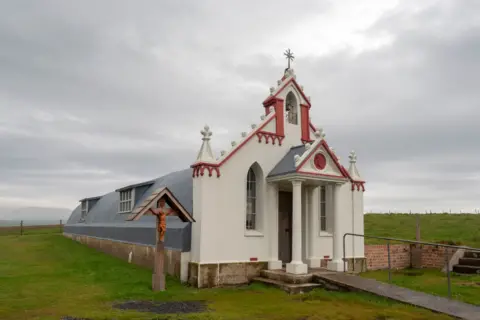 Getty Images
Getty ImagesIn 1939, the British battleship HMS Royal Oak was sunk by a Nazi U-boat in Scapa Flow, resulting in the loss of 834 lives.
In response, Winston Churchill approved the building of a series of sea defences in a bid to make the waters around Orkney more secure.
More than 1,000 Italian soldiers captured in North Africa were sent to Orkney in February 1942 to help build what are now called The Churchill Barriers.
Around half were transported to Camp 60 in Lamb Holm and a similar number to Camp 34 in Burray.
After a few months, the need arose for a place of worship. Mr Chiocchetti proposed that a chapel should be built. He went on to design and paint it.


When officers realised that Mr Chiocchetti was a talented artist, he was given permission to work full time on the chapel.
He was excused heavy duties and spent his time doing what he loved in the converted Nissen huts on the island of Lamb Holm.
The Madonna and child painting above the altar was based on an image on a prayer card his mother gave him before he left home for war.
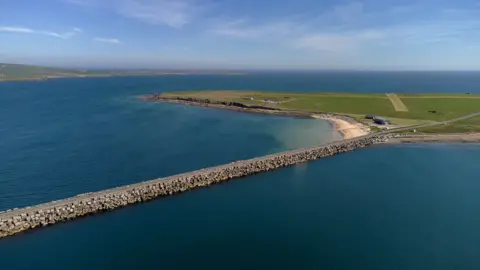 Getty Images
Getty ImagesMs Chiocchetti said her father never talked about the living conditions in the prison camp, but instead spoke of the friendships formed with other prisoners, soldiers and the people of Orkney.
"His anecdotes remain on how they obtained the materials to build the chapel, on the games and pranks they invented to pass the time," she said.
She added that he considered himself privileged because while his companions worked under the elements to build the barriers, he dedicated his time to painting the frescoes and decorating the chapel.
Although people speak about the chapel being completed by Mr Chiocchetti, he always insisted that there were many men on the camp who helped him.
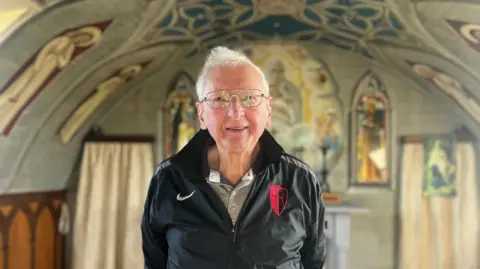
Meanwhile John Muir has been directly involved with the chapel for more than 30 years.
The honorary president of The Friends of the Italian Chapel, Mr Muir was born on a farm just up the road.
As a boy, he and his friends would cycle across the Churchill Barriers and look at the chapel curiously.
When Italy surrendered to allied forces in 1943, the men being held in Orkney could not be returned to their native country because of Nazi Germany's influence in the region.
That meant the prisoners had to stay in the camps until the end of the war.
One of the men, who was a barber in civilian life, would visit Mr Muir's family farm.
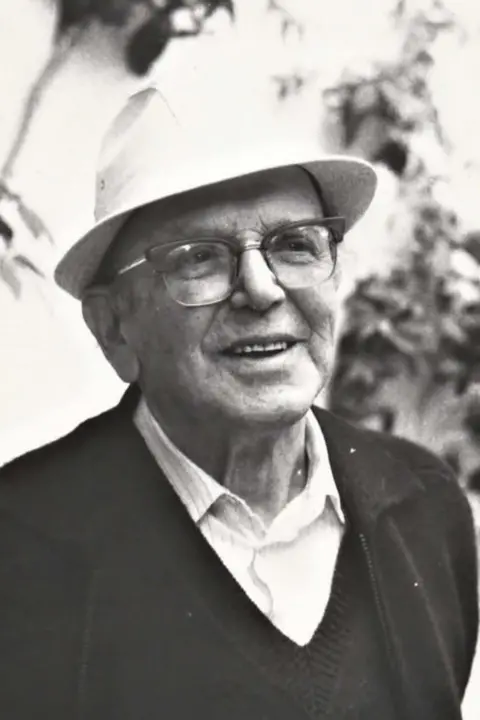 Letizia Chiocchetti
Letizia Chiocchetti"All the men used to come to the house and get their hair cut. I remember clearly I would sit on my knees on the chair and he always finished off with a cut throat razor, which he sharpened on a piece of leather.
"He was shaving my neck and my older brother slipped up alongside me and said 'Watch yourself, he could cut your throat with that thing you know, he's the enemy'. But by that time of course, they were not the enemy."
Mr Muir said his brother Gordon and his friend were supposedly the first civilians to cross the barriers.
"They were jumping from one pile of stones to the other with the sea and they were severely reprimanded when they came to this side."
He said British soldiers then told the boys they would be sent straight to prison.
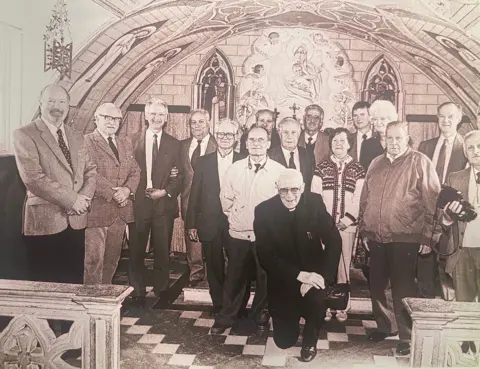 John Muir
John MuirMr Chiocchetti returned to the chapel several times after the war to restore parts of his work, before he died in 1999 aged 89.
Mr Muir has kept in touch with a number of the men over the years who were prisoners.
On the 50th anniversary of them leaving Orkney, seven of them came back.
He has visited Mr Chiocchetti's hometown of Moena 12 times and is a good friend of the family.
Mr Muir said: "I have lots of friends there. I can be walking along the street when somebody says 'Bonjourno John' so I feel quite at home there."
